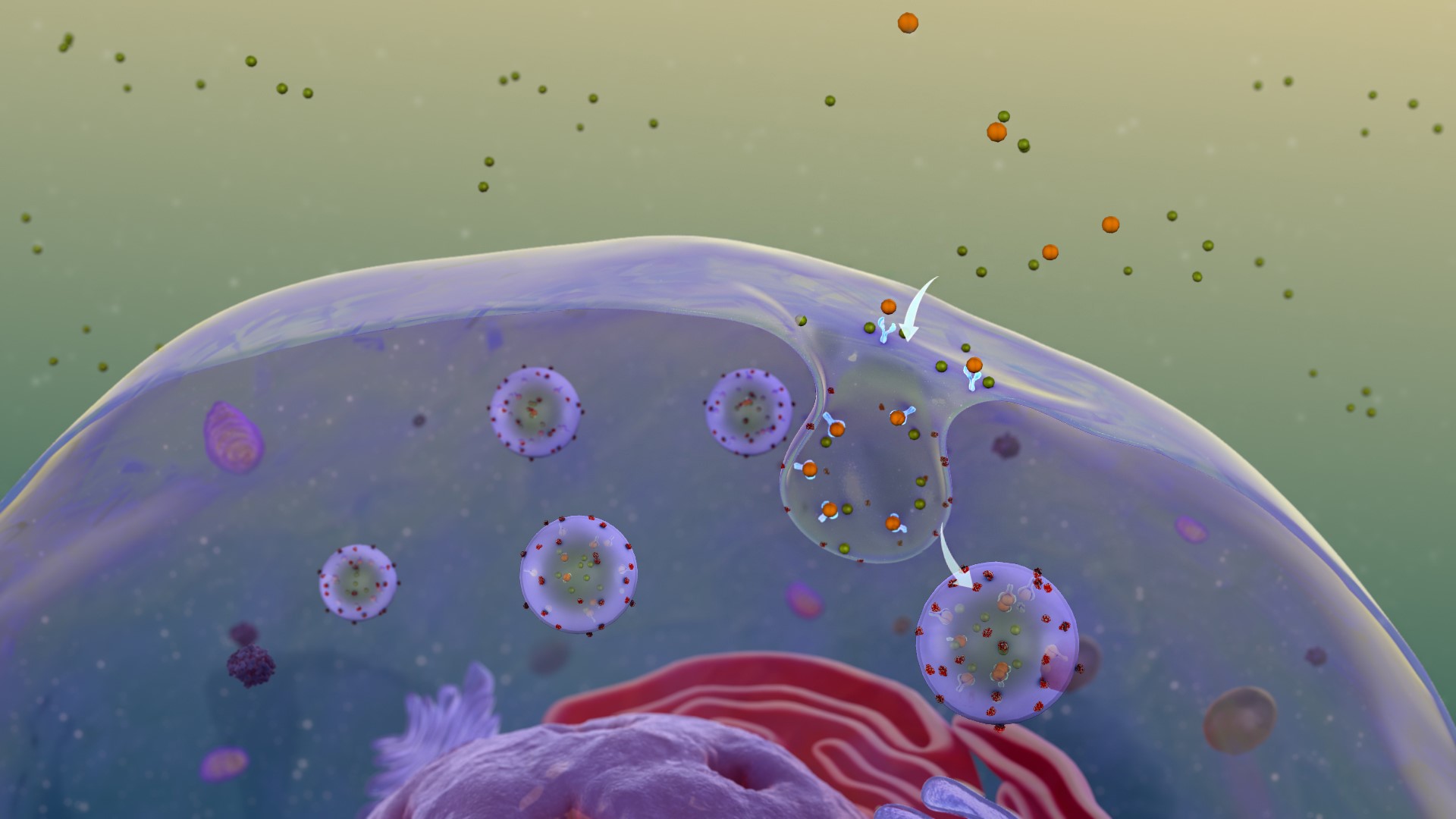
Receptor-mediated endocytosis is a cellular process where cells absorb molecules by engulfing them. This method is highly specific, involving receptors on the cell surface that bind to particular substances. Why is receptor-mediated endocytosis important? It allows cells to intake essential nutrients, hormones, and other vital molecules efficiently. This process plays a crucial role in maintaining cellular health and function. Understanding receptor-mediated endocytosis can help in developing targeted drug delivery systems and treating various diseases. In this post, we'll explore 36 intriguing facts about this fascinating cellular mechanism, shedding light on its significance and applications.
What is Receptor-Mediated Endocytosis?
Receptor-mediated endocytosis (RME) is a cellular process where cells absorb molecules by engulfing them. This method is highly specific, relying on receptors on the cell surface to identify and bind to particular substances. Let's dive into some fascinating facts about this essential biological process.
-
RME is a type of endocytosis, a broader category of cellular ingestion mechanisms.
-
It was first described in the 1970s by Nobel laureate Michael Brown and Joseph Goldstein.
-
This process is crucial for nutrient uptake, such as cholesterol and iron.
-
RME helps cells regulate surface receptor levels, maintaining cellular homeostasis.
How Does Receptor-Mediated Endocytosis Work?
Understanding the mechanics of RME can be complex, but breaking it down into steps makes it easier to grasp. Here are some key points about how this process functions.
-
Specific receptors on the cell membrane recognize and bind to target molecules.
-
Once bound, the receptor-ligand complex migrates to a clathrin-coated pit on the cell surface.
-
Clathrin, a protein, forms a lattice-like structure, aiding in the formation of a vesicle.
-
The vesicle pinches off from the membrane, entering the cell's interior.
-
Inside the cell, the vesicle sheds its clathrin coat and fuses with an endosome.
-
The acidic environment of the endosome causes the ligand to dissociate from the receptor.
-
Receptors are often recycled back to the cell surface for reuse.
Importance of Receptor-Mediated Endocytosis
RME isn't just a cellular curiosity; it's vital for numerous physiological processes. Here are some reasons why this mechanism is so important.
-
It allows cells to take in large molecules that can't pass through the cell membrane.
-
RME is essential for the uptake of low-density lipoprotein (LDL), which carries cholesterol.
-
Iron uptake via transferrin receptors is another critical function of RME.
-
Hormones like insulin rely on RME for cellular entry.
-
It plays a role in neurotransmitter regulation, affecting brain function.
Receptor-Mediated Endocytosis in Disease
RME's role in health is significant, but its malfunction can lead to disease. Here are some ways this process is linked to various conditions.
-
Defects in LDL receptor-mediated endocytosis can cause familial hypercholesterolemia.
-
Some viruses, like influenza, exploit RME to enter host cells.
-
Cancer cells often hijack RME to uptake more nutrients, aiding in their rapid growth.
-
Alzheimer's disease has been linked to disruptions in receptor-mediated endocytosis.
Types of Receptors Involved in RME
Different receptors are involved in RME, each with specific functions. Here are some of the key players.
-
LDL receptors are crucial for cholesterol uptake.
-
Transferrin receptors help in iron absorption.
-
Epidermal growth factor receptors (EGFR) are involved in cell growth and proliferation.
-
Insulin receptors regulate glucose uptake.
-
Fc receptors play a role in immune responses by binding to antibodies.
Interesting Facts About Receptor-Mediated Endocytosis
Beyond its basic functions, RME has some intriguing aspects worth noting. Here are a few fun facts.
-
RME can be highly selective, sometimes recognizing molecules based on a single amino acid difference.
-
The process can be upregulated or downregulated depending on the cell's needs.
-
Some toxins, like diphtheria toxin, use RME to enter cells and cause harm.
-
RME is not limited to animal cells; plants and fungi also use this mechanism.
-
Researchers are exploring ways to use RME for targeted drug delivery.
Future Research and Applications
The study of RME is ongoing, with new discoveries and applications emerging regularly. Here are some exciting areas of research.
-
Scientists are investigating how to manipulate RME to improve drug delivery systems.
-
Understanding RME better could lead to new treatments for viral infections.
-
Researchers are exploring the role of RME in neurodegenerative diseases.
-
Advances in imaging technology are allowing for more detailed studies of RME in real-time.
-
Synthetic biology is being used to create artificial receptors for specific applications.
-
The potential for RME in personalized medicine is a growing field of interest.
Final Thoughts on Receptor-Mediated Endocytosis
Receptor-mediated endocytosis is a fascinating process that plays a crucial role in cellular function. By understanding how cells selectively take in molecules, we gain insights into everything from nutrient absorption to disease mechanisms. This process involves specific receptors on the cell surface binding to target molecules, which then get engulfed into the cell. It's not just about cells eating; it's about them being picky eaters, ensuring they get exactly what they need. This selectivity is vital for maintaining cellular health and function. Scientists continue to study this process to develop targeted therapies for various diseases, including cancer and genetic disorders. So, next time you think about how cells work, remember the importance of receptor-mediated endocytosis. It’s a small-scale process with big implications for biology and medicine.
Was this page helpful?
Our commitment to delivering trustworthy and engaging content is at the heart of what we do. Each fact on our site is contributed by real users like you, bringing a wealth of diverse insights and information. To ensure the highest standards of accuracy and reliability, our dedicated editors meticulously review each submission. This process guarantees that the facts we share are not only fascinating but also credible. Trust in our commitment to quality and authenticity as you explore and learn with us.


